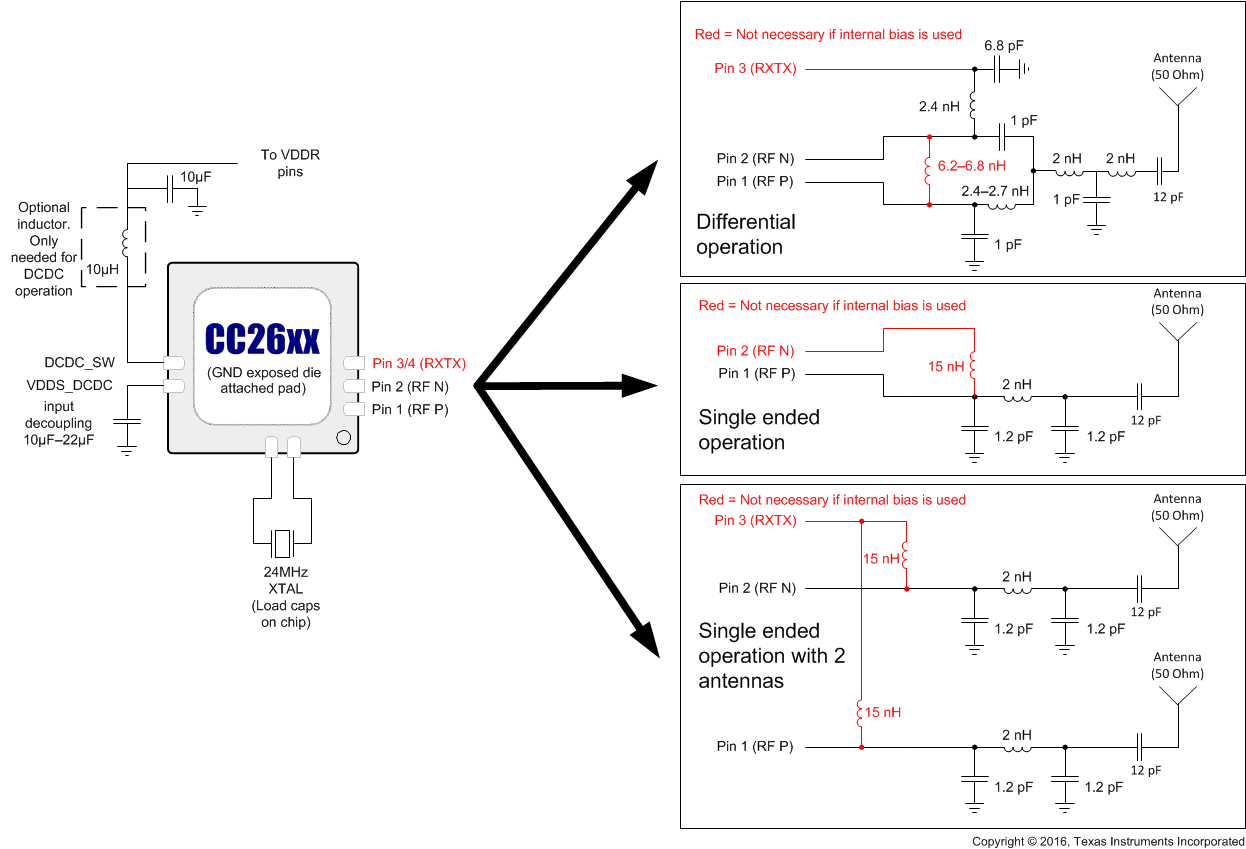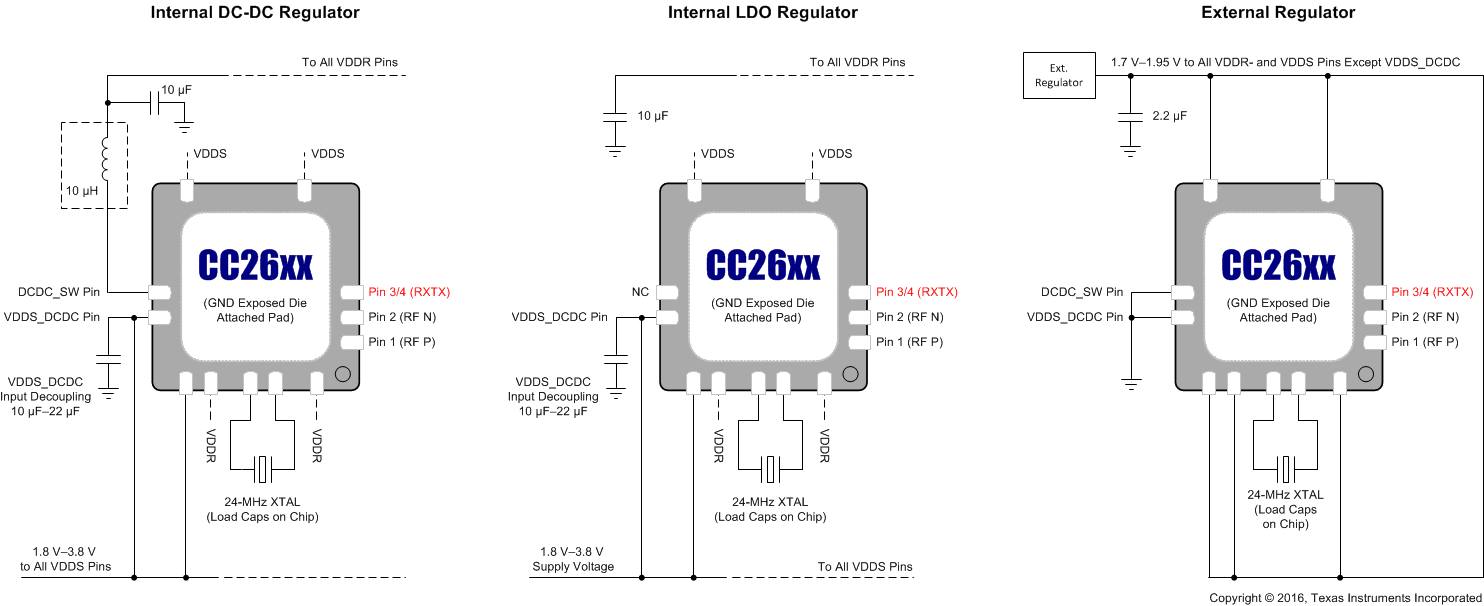ZHCSFW7C december 2016 – september 2020 CC2640R2F
PRODUCTION DATA
- 1 特性
- 2 应用
- 3 说明
- 4 Functional Block Diagram
- 5 Revision History
- 6 Device Comparison
-
7 Terminal Configuration and Functions
- 7.1 Pin Diagram – RGZ Package
- 7.2 Signal Descriptions – RGZ Package
- 7.3 Pin Diagram – RHB Package
- 7.4 Signal Descriptions – RHB Package
- 7.5 Pin Diagram – YFV (Chip Scale, DSBGA) Package
- 7.6 Signal Descriptions – YFV (Chip Scale, DSBGA) Package
- 7.7 Pin Diagram – RSM Package
- 7.8 Signal Descriptions – RSM Package
-
8 Specifications
- 8.1 Absolute Maximum Ratings
- 8.2 ESD Ratings
- 8.3 Recommended Operating Conditions
- 8.4 Power Consumption Summary
- 8.5 General Characteristics
- 8.6 125-kbps Coded (Bluetooth 5) – RX
- 8.7 125-kbps Coded (Bluetooth 5) – TX
- 8.8 500-kbps Coded (Bluetooth 5) – RX
- 8.9 500-kbps Coded (Bluetooth 5) – TX
- 8.10 1-Mbps GFSK (Bluetooth low energy) – RX
- 8.11 1-Mbps GFSK (Bluetooth low energy) – TX
- 8.12 2-Mbps GFSK (Bluetooth 5) – RX
- 8.13 2-Mbps GFSK (Bluetooth 5) – TX
- 8.14 24-MHz Crystal Oscillator (XOSC_HF)
- 8.15 32.768-kHz Crystal Oscillator (XOSC_LF)
- 8.16 48-MHz RC Oscillator (RCOSC_HF)
- 8.17 32-kHz RC Oscillator (RCOSC_LF)
- 8.18 ADC Characteristics
- 8.19 Temperature Sensor
- 8.20 Battery Monitor
- 8.21 Continuous Time Comparator
- 8.22 Low-Power Clocked Comparator
- 8.23 Programmable Current Source
- 8.24 Synchronous Serial Interface (SSI)
- 8.25 DC Characteristics
- 8.26 Thermal Resistance Characteristics
- 8.27 Timing Requirements
- 8.28 Switching Characteristics
- 8.29 Typical Characteristics
- 9 Detailed Description
- 10Application, Implementation, and Layout
- 11Device and Documentation Support
- 12Mechanical, Packaging, and Orderable Information
10.1 Application Information
Very few external components are required for the operation of the CC2640R2F device. This section provides some general information about the various configuration options when using the CC2640R2F in an application, and then shows two examples of application circuits with schematics and layout. This is only a small selection of the many application circuit examples available as complete reference designs from the product folder on www.ti.com.
Figure 10-1 shows the various RF front-end configuration options. The RF front end can be used in differential- or single-ended configurations with the options of having internal or external biasing. These options allow for various trade-offs between cost, board space, and RF performance. Differential operation with external bias gives the best performance while single-ended operation with internal bias gives the least amount of external components and the lowest power consumption. Reference designs exist for each of these options.
 Figure 10-1 CC2640R2F Application Circuit
Figure 10-1 CC2640R2F Application CircuitFigure 10-2 shows the various supply voltage configuration options. Not all power supply decoupling capacitors or digital I/Os are shown. Exact pin positions will vary between the different package options. For a detailed overview of power supply decoupling and wiring, see the TI reference designs and the CC26xx technical reference manual (Section 11.3).
 Figure 10-2 Supply Voltage Configurations
Figure 10-2 Supply Voltage Configurations